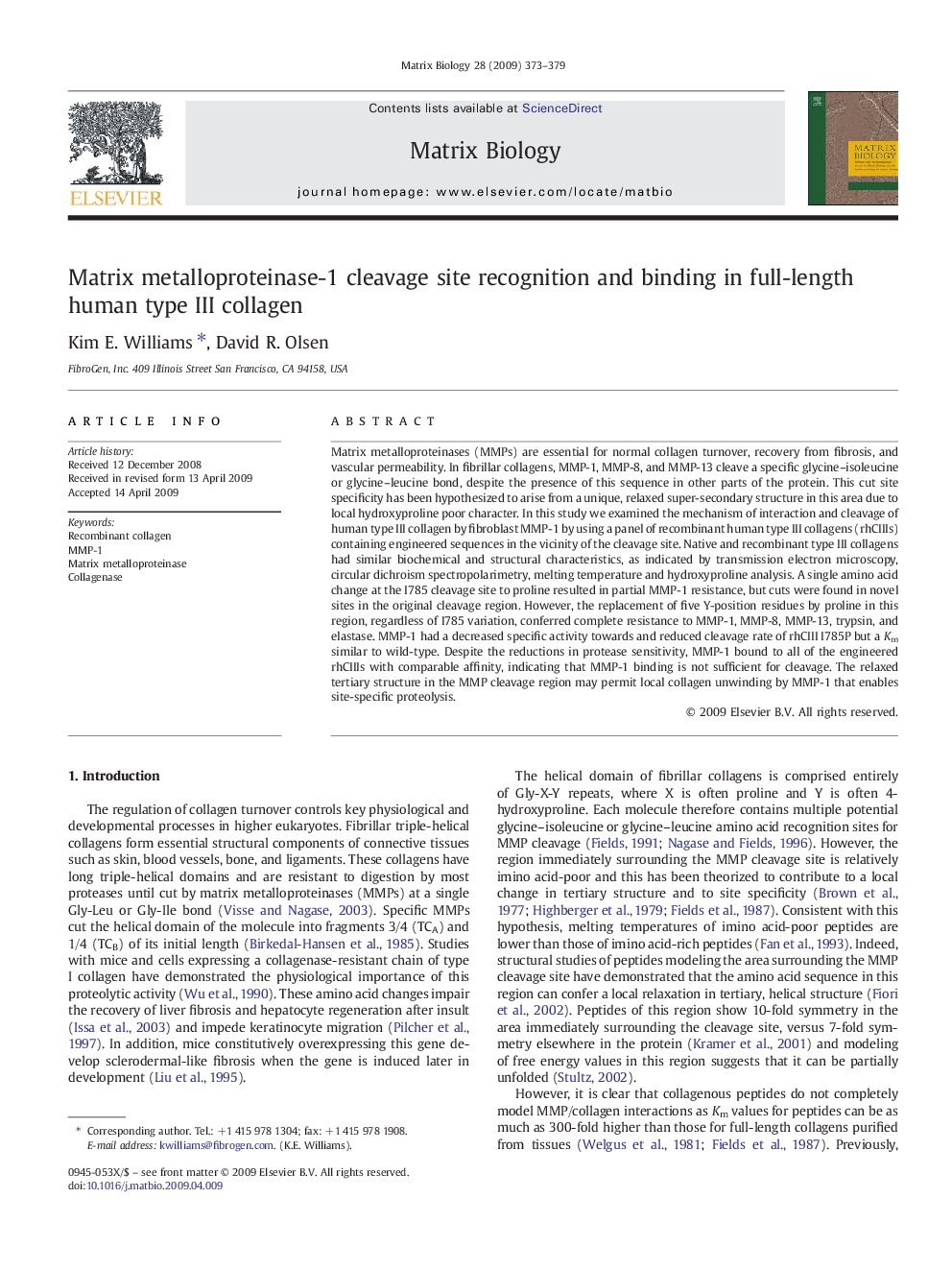| Article ID | Journal | Published Year | Pages | File Type |
|---|---|---|---|---|
| 2144967 | Matrix Biology | 2009 | 7 Pages |
Matrix metalloproteinases (MMPs) are essential for normal collagen turnover, recovery from fibrosis, and vascular permeability. In fibrillar collagens, MMP-1, MMP-8, and MMP-13 cleave a specific glycine–isoleucine or glycine–leucine bond, despite the presence of this sequence in other parts of the protein. This cut site specificity has been hypothesized to arise from a unique, relaxed super-secondary structure in this area due to local hydroxyproline poor character. In this study we examined the mechanism of interaction and cleavage of human type III collagen by fibroblast MMP-1 by using a panel of recombinant human type III collagens (rhCIIIs) containing engineered sequences in the vicinity of the cleavage site. Native and recombinant type III collagens had similar biochemical and structural characteristics, as indicated by transmission electron microscopy, circular dichroism spectropolarimetry, melting temperature and hydroxyproline analysis. A single amino acid change at the I785 cleavage site to proline resulted in partial MMP-1 resistance, but cuts were found in novel sites in the original cleavage region. However, the replacement of five Y-position residues by proline in this region, regardless of I785 variation, conferred complete resistance to MMP-1, MMP-8, MMP-13, trypsin, and elastase. MMP-1 had a decreased specific activity towards and reduced cleavage rate of rhCIII I785P but a Km similar to wild-type. Despite the reductions in protease sensitivity, MMP-1 bound to all of the engineered rhCIIIs with comparable affinity, indicating that MMP-1 binding is not sufficient for cleavage. The relaxed tertiary structure in the MMP cleavage region may permit local collagen unwinding by MMP-1 that enables site-specific proteolysis.
